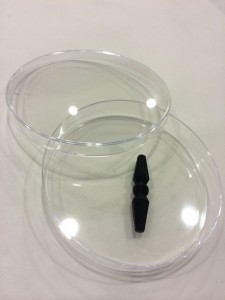I was watching the movie Big Hero 6 and I was amazed at how similar Hiro’s microbots and the nanocybotics that my cyborgs use are. This isn’t plagiarism but it isn’t coincidence either. Why? Because this technology is very close to being real (if it isn’t already real and I simply haven’t heard about it yet). I’ve seen demonstrations at places like the Consumer Electronics Show of technology that could be the forerunners of nanocybotics.
What Are Nanocybotics?
In non-scientific terms, they’re tiny robots that help cyborgs heal. Nanocybotics are the robotic version of stem cells and are coded to return every cell or mechanism to its ‘normal’ state (according to the cyborg’s DNA). They also help cyborgs, during their development stages, grow their mechanics in concert with their organic parts.
The human body already has the potential to heal itself. A cut on our finger heals, often with no assistance. Nanocybotics boost a cyborg’s ability to heal. They can survive greater injuries and recover in less time. This, combined with their almost indestructible metal frame, makes cyborgs very difficult to kill.
How Cyborgs Grow
But how do cyborgs heal or ‘grow’ their mechanics (their processors, metal frames, other parts)? I view the nanocybotics as becoming almost like tiny 3D printers. Using the inputs cyborgs are administered (though feeding tubes), the nanocybotics reconstruct their mechanics. While the cyborg is growing, the nanocybotics can also break the mechanics down and rebuild them in larger sizes.
Why Cyborgs Don’t Grow Old
All aging is, in the simplest sense, is gradual cumulative wear and tear on bodies, on our cells. Cyborgs don’t have this wear and tear. Their bodies are healed completely. This means they don’t age. They can possibly live forever.
Because nanocybotics are linked to a cyborg’s DNA, noting what the cyborg’s ‘normal’ is, they are unique to each unit. If a nanocybotic were transferred from its host unit to the new unit (through saliva or cum), the nanocybotic would repair itself until it aligned with the new cyborg’s DNA.
Why Cyborgs Can Heal Humans
When nanocybotics are transferred to humans, they align with a human’s DNA. They will heal wounds and fade bruises… temporarily. Not having the necessary inputs to function, these nanocybotics will eventually die.
Unless this transfer is done regularly. (grins)
Subscribe To My Release Day Newsletter: http://tasteofcyn.com/2014/05/28/newsletter/
Half Man. Half Machine. All Hers.
Rage, the Humanoid Alliance’s most primitive cyborg, has two goals—kill all of the humans on his battle station and escape to the Homeland. The warrior has seen the darkness in others and in himself. He believes that’s all he’s been programmed to experience.
Until he meets Joan.
Joan, the battle station’s first female engineer, has one goal—survive long enough to help the big sexy cyborg plotting to kill her. Rage might not trust her but he wants her. She sees the passion in his eyes, the caring in his battle-worn hands, the gruff emotion in his voice.
When Joan survives the unthinkable, Rage’s priorities are tested. Is there enough room in this cyborg’s heart for both love and revenge?
Buy Now:
On Amazon: http://www.amazon.com/Releasing-Rage-Cyborg-Sizzle-Book-ebook/dp/B00ZOL1DRO
On ARe: https://www.allromanceebooks.com/product-releasingrage-1850041-340.html








